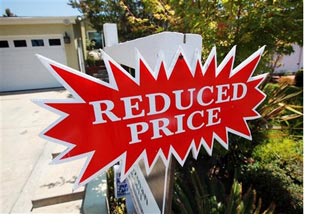L.A. County property values take deep slide
August 26, 2010
 Total property values in Los Angeles County sunk last year by the sharpest margin since 1995, during the depths of the last housing recession.
Total property values in Los Angeles County sunk last year by the sharpest margin since 1995, during the depths of the last housing recession.
The property rolls in the county fell $18.5 billion, to a total of $1.089 trillion—a 1.7 percent decline from 2009.
The valuations are disclosed in the L.A. County Assessor’s newly-released 2010 Annual Report. The yearly snapshot of 2.3 million residential and commercial properties details changes in value in all of the county’s 88 cities and unincorporated areas, providing residents with a guide to property trends in their communities.
Assessor Robert Quon attributed the drop chiefly to the housing malaise.
“The largest factor was the continuing decline in home values,” said Quon, who was appointed as assessor on April 1, after 39 years in the department, to replace the retiring Rick Auerbach. Quon is not running for the post in the November election.
But also contributing to this year’s decline was a rare occurrence: no inflation.
In previous years, rising inflation has meant higher valuations, which are allowed under Proposition 13, so long as they don’t exceed 2 percent. This year, inflation actually fell by .3 percent, Quon said. The result: $2 billion less on the assessment rolls. “This is the first year that [the inflation factor] has been negative,” Quon said.
In preparing this year’s report, Quon said his office focused on areas hit hard by the housing bubble-and-bust, reviewing the values of 583,000 homes and condominiums, most of which were purchased between 2003 and 2009,
Of those, about 400,000 had declined in value. The average single family home plunged by $162,000, while condos fell by $133,000. The good news was that the lowered assessments brought a reduction in property tax bills for those condo and home owners of between $1,500 and $1,800, respectively.
The outlook for local government, however, is not so good.
The reduced revenues in cities that saw values decline will mean a drop in funding for schools and public services that depend on property taxes, Quon said.
“If there is a reduction in value that is warranted, we go out and reduce those values, regardless of what it means for government revenue,” Quon said. “We are trying to be accurate” to be certain no property owners aren’t charged more than their fair tax burden.
Overall, property values fell in 61 of the county’s 88 cities and in unincorporated county areas. Los Angeles fell 2.3 percent; Long Beach slumped 2.9 percent; Beverly Hills lost 2.6 percent and Santa Monica edged down 0.9 percent.
The steepest declines were in the Antelope Valley; Palmdale fell by 12 percent, while assessed values in Lancaster shrank by 14.4 percent
The unincorporated areas, listed in a single category and not broken down by location, saw a 2.6 percent decline.
Meanwhile, values rose or held steady in 27 cities. In addition to county-leading Arcadia (up 4.4 percent), Hidden Hills rose 2.0 percent, Glendale rose 1.3 percent and Malibu climbed 1.2 percent.
Despite the drops, Quon says the county’s property tax base remains “strong.” It’s the third highest total on record—topped only by 2008 and 2009. He said the county hasn’t suffered as much as neighboring counties that have been hit even harder by the housing crunch.
Also, in another bit of encouraging news, Quon said property foreclosures in Los Angeles County in 2009 dropped to 36,500 from 41,300 in 2008.
Posted 8/26/10












 405 bridge work causes a stink
405 bridge work causes a stink
